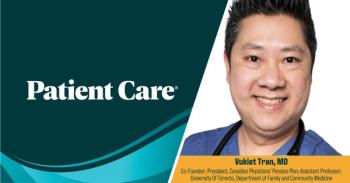
Eosinophilic Esophagitis
A 45-year-old man presented with food impactionof 3 hours' duration. He also complainedof dysphagia and chest pain. His historyincluded asthma during childhood and intermittentdysphagia for the past 3 years. Anupper endoscopy performed 2 years earlier showed noesophageal lesions.
A 45-year-old man presented with food impaction of 3 hours' duration. He also complained of dysphagia and chest pain. His history included asthma during childhood and intermittent dysphagia for the past 3 years. An upper endoscopy performed 2 years earlier showed no esophageal lesions.
An esophagogastroduodenoscopy was performed to remove an impacted meat bolus. Examination of the esophagus revealed whitish discoloration, longitudinal mucosal furrows, and multiple corrugated mucosal rings (A). Histopathological examination of hematoxylin and eosin-stained esophageal biopsy specimens taken at all levels showed a dense infiltration of eosinophils (more than 15 to 20 per high-power field) within the squamous esophageal epithelium (B). Eosinophilic esophagitis was diagnosed.1,2
Originally described in children, eosinophilic esophagitis has been increasingly reported in young and middle-aged adults.1 More than 75% of cases are in men. Allergic diseases (asthma, food allergies, atopic dermatitis) are present in 62% to 85% of patients and their family members.1 One report of eosinophilic esophagitis in 3 brothers with dysphagia suggests inheritance or a genetic factor.2
Eosinophilic esophagitis has become more frequently recognized. This may be because of better diagnostic tools, increased awareness, or a higher incidence of allergic diseases.1
Patients may present with food impaction caused by strictures, usually of the proximal or middle esophagus. More often, patients complain of long-standing intermittent dysphagia, heartburn, or chest pain and are treated for presumptive gastroesophageal reflux disease. Endoscopic features include mucosal furrows, corrugated rings, felinization, granularity, absence of vascular pattern, and strictures of the lower as well as upper esophagus.1,2 Caution is required when strictures are dilated in patients with eosinophilic esophagitis because of the increased risk of mucosal tearing and perforation.
Avoidance of certain foods resolves symptoms in many patients. Those who do not respond to dietary restriction are treated with oral or inhaled corticosteroids or a leukotriene inhibitor.3 Relapse after treatment occurs in at least 25% of patients.1-3
A 4-week course of fluticasone markedly reduced this patient's symptoms. At 1-year follow-up, the patient reported no new episodes of food impaction and his dysphagia had resolved.
References:
REFERENCES:1. Fox VL, Nurko S, Furuta GT. Eosinophilic esophagitis: it's not just kid's stuff. Gastrointest Endosc. 2002;56:260-270.
2. Patel SM, Falchuk KR. Three brothers with dysphagia caused by eosinophilic esophagitis. Gastrointest Endosc. 2005;61:165-167.
3. Attwood SE, Lewis CJ, Bronder CS, et al. Eosinophilic esophagitis: a novel treatment using montelukast. Gut. 2003;52:181-185.
Newsletter
Enhance your clinical practice with the Patient Care newsletter, offering the latest evidence-based guidelines, diagnostic insights, and treatment strategies for primary care physicians.

























































































































































































































































































